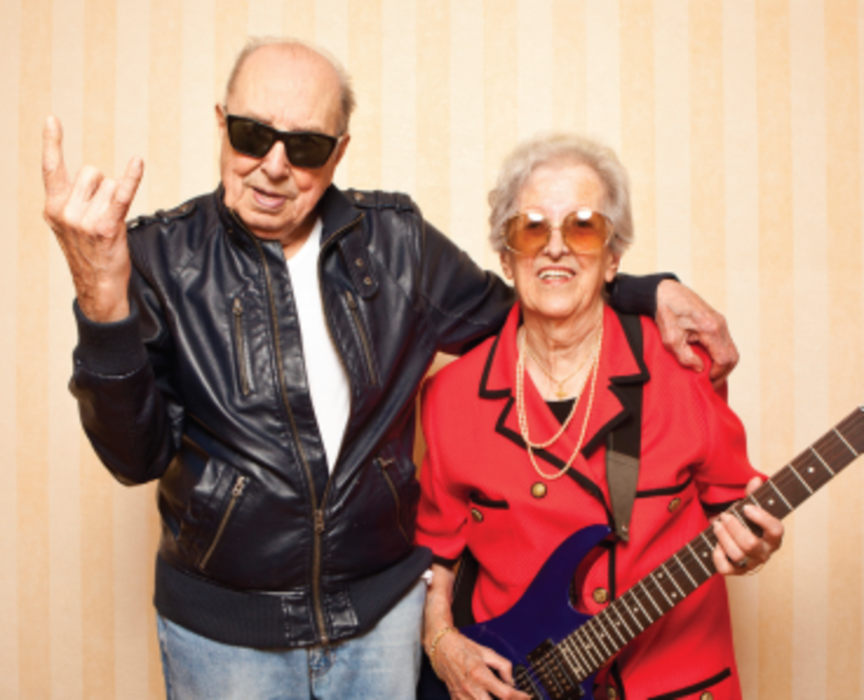Generating compelling customer experiences is a requisite for profitable brands. But nonprofits should be held to the same standards, especially if they expect to meet their key performance indicators (KPIs), says Naomi Hirabayashi, CMO of DoSomething.org, a not-for-profit for young people.
“It shouldn’t be that [digital users] go from Amazon or Dailybreak to your website and say, ‘They’re not-for-profit, so it’s OK that I’m having this really bad user experience—they’re really nice people,’” Hirabayashi says. “You should demand the same quality, integrity, and expectations because of our goals.”
Getting its target audience, people between the ages of 13 to 25, to sign up for as many volunteer opportunities as possible is one of DoSomething’s KPIs. To achieve this objective, the organization focuses on causes that are important to that age group and instill a sense of pride. DoSomething successfully tapped into this sense of empowerment with its Grandparents Gone Wired campaign.
Grandparents Gone Wired stemmed from research that found decreases in depression among seniors who use the Internet. The National Alliance on Mental Illness reports that more than 6.5 million U.S. adults ages 65 or older suffer from depression. However, the Internet reduces depression among Americans 55 or older by 34%, according to the 2013 report “Revisiting Internet Use and Depression Among the Elderly” by the Phoenix Center for Advanced Legal & Economic Public Policy Studies. Despite these figures, as of April 2012 only half of seniors aged 65 or older (53%) use the Internet or email, according to a study by Pew Research Center’s Internet & American Life Project.
The campaign encouraged young volunteers to teach their grandparents or other elderly community members about technology to help them stay in touch with loved ones. DoSomething ran the campaign from October 28, 2013 to January 4, 2014 in partnership with Mentor Up, a branch of the AARP Foundation that works with young people to help those over 50. The goal of the campaign, Hirabayashi says, was to get at least 75,000 volunteers to take part.
Volunteers could sign up for the campaign by visiting DoSomething.org/grandparents. Once enrolled, participants could download technology teaching guides on topics such as using Facebook and Skype to help educate their senior students. In addition, volunteers could text WIRED to a designated number and choose what kind of technology they wanted to teach. DoSomething would then send the volunteer a corresponding step-by-step teaching guide via text, Hirabayashi explained. Finally, volunteers were asked to submit a photo of themselves with their pupil via email, Instagram, or text for the chance to win a scholarship.
“The idea of [a young person] being a teacher is a powerful call-to-action for them because they feel comfortable with going out, talking about technology, and getting older adults set up,” Hirabayashi says.
To drive awareness and engagement, DoSomething promoted the campaign through PR efforts, social and online posts, and marketing partnerships. The nonprofit also worked with Dailybreak Media, a native engagement platform that deploys gamified content, to launch a multistep challenge. The challenge included a matching game in which participants had to pair different forms of technology—ranging from an MP3 player to the Web—with the year they debuted, as well as a quiz that asked young people how they would handle life without computers. Those who completed the challenge won digital coins, which they could save up and cash in for prizes. Dailybreak CMO Nancy Liberman says it promoted the campaign by emailing those among Dailybreak’s users who fit DoSomething’s target demographic and by featuring the challenge at the top of its website.
More than 84,000 people signed up for the Grandparents Gone Wired campaign. In addition, 89% of people who partook in the Dailybreak game completed all of the challenges, Liberman says. On average, people spent nearly four minutes engaging with the content.
“It’s important for not-for-profits across the world and across the country to be taking best practices from businesses,” Hirabayashi says, “[including] having those clear KPIs [and] investing in a clean user experience to make sure that our ultimate goal, which is social [and] public good, is easier for the experience on the member side and easier to attain.”






